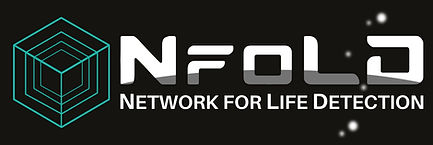ECC Member Spotlight: Dr. Aditi Pandey
- Sean Brown

- Jan 26, 2024
- 2 min read
Updated: Jan 31, 2024
For our January ECC Member Spotlight, we are highlighting Postdoctoral Fellow Dr. Aditi Pandey from the Lunar and Planetary Institute! As the Newsletter Lead and member of the Webinar team within our NFoLD Communications and Organization Team, Aditi helps compose the NFoLD monthly newsletters and circulate webinar-related news!
Who I am:
I am an analytical chemist with expertise in studying transient short-range ordered non-crystalline and nano-crystalline phases in Mars analog and simulant materials. Currently, I am a Postdoctoral Fellow at the Lunar Planetary Institute, USRA, and conduct my research at the Astromaterial Research and Exploration Science (ARES) at JSC, NASA. As a science principal investigator (S-PI) on a recently funded Solar System Workings (SSW) project co-written with Dr. Elizabeth Rampe (PI), I conduct analog and experimental studies to investigate cryo-sulfate formation mechanisms on Mars. As a Mars Mission-Enabling Scientist at NASA, I work with the Mars Science Laboratory team within the CheMin X-ray diffraction instrumentation group and collaborate with the Goddard Instrument Field Team (GIFT) to asses potential Mars analog sites.
What I do:
I use classic deduction techniques to piece together information collected through various analytical methods like jigsaw puzzles to determine how the composition of minerals and short-range ordered (SRO) X-ray amorphous materials transform over time on Mars.
Geological SRO materials are transient and rapidly transformed into their crystalline counterparts in terrestrial settings. They are not fully understood because of the challenges associated with analyzing them, mainly if they are heterogeneous natural samples because of their disorder and instability in various instruments. However, these inorganic components are ubiquitous on Mars and present in very high abundances in samples dated up to 3 billion years old. Given that these materials are transformed on Earth by chemotrophic microbial consumption and biomineralization, the possibility of finding organic biosignatures in ancient samples from Mars is significant. Given the limitations in lab-scale instrument analysis of these materials, I worked to pursue modern synchrotron-based analytical techniques. In particular, I focus on Synchrotron-based scanning transmission X-ray microscopy (STXM) with near-edge X-ray absorption fine structure (NEXAFS). This method allows me to zoom in to a 30 nm spatial resolution and characterize highly disordered inorganic and organic components simultaneously.
As we do not have any samples from Mars yet, I use Mars analog samples collected from exotic locations on Earth that resemble what has been observed on Mars. I have analyzed materials from Hawaii, Iceland, and New Mexico. Most recently, I am awaiting a decision on my application to go to Alaska to collect samples from fumaroles in The Valley of Ten Thousand Smokes. I aim to use my expertise to determine the geological implications of SRO compositions and their potential role in preserving biosignatures on Mars.
Why I enjoy doing NfoLD things:
I enjoy doing NfoLD things because it connects me with the world of astrobiology. Since my work primarily involves geochemical analyses, I find my interactions through NfoLD inspiring to keep my organic chemistry foundation growing and devise new projects to collaborate across disciplines. NfoLD is an excellent platform for early career members to connect and support each other in reaching our goals.

ความคิดเห็น